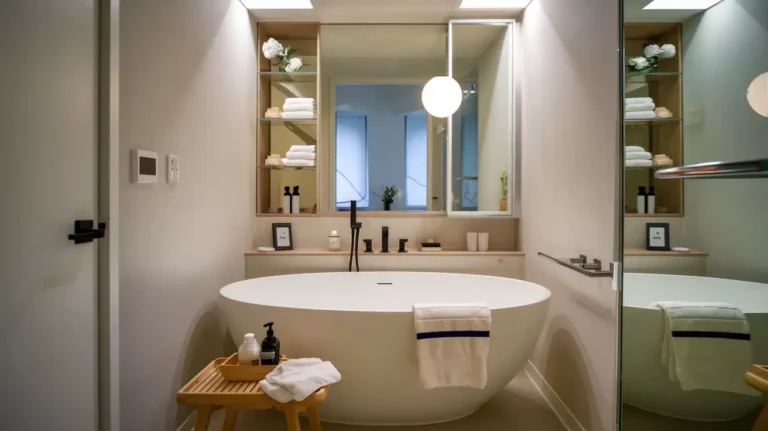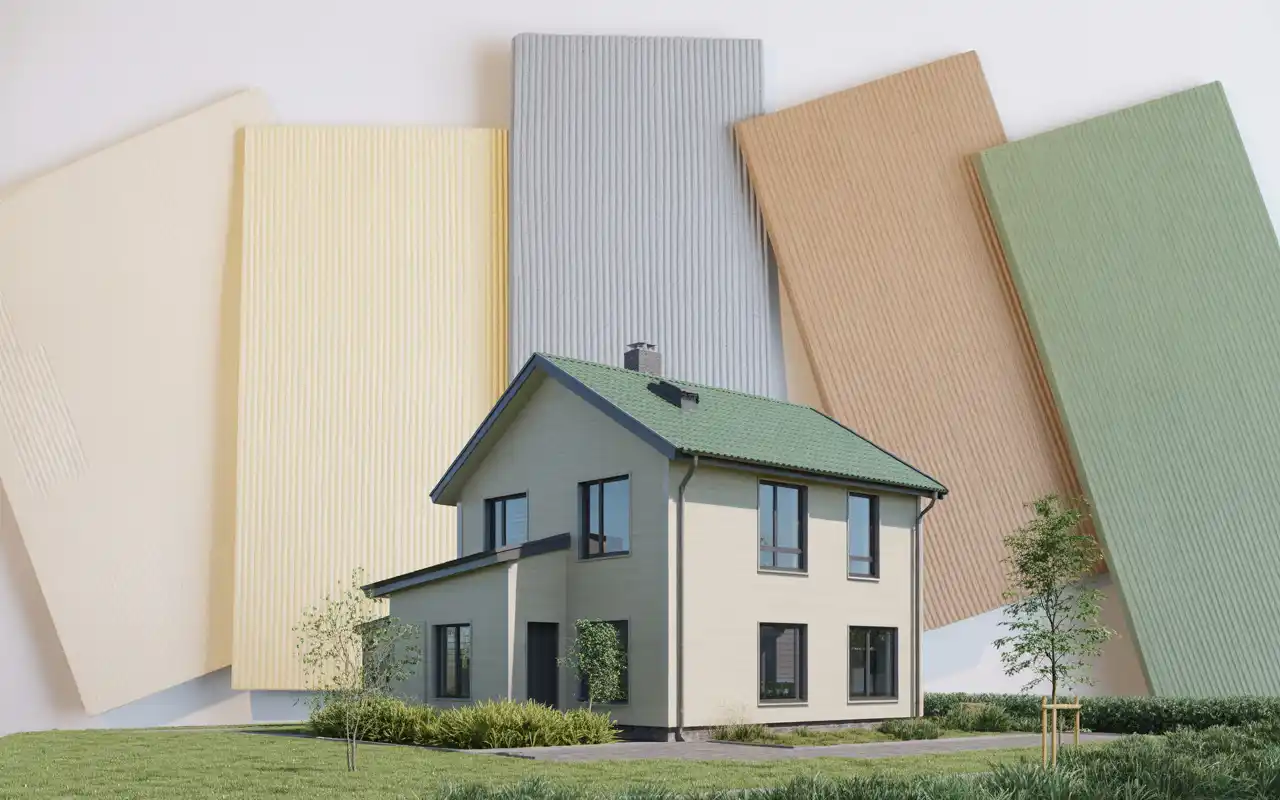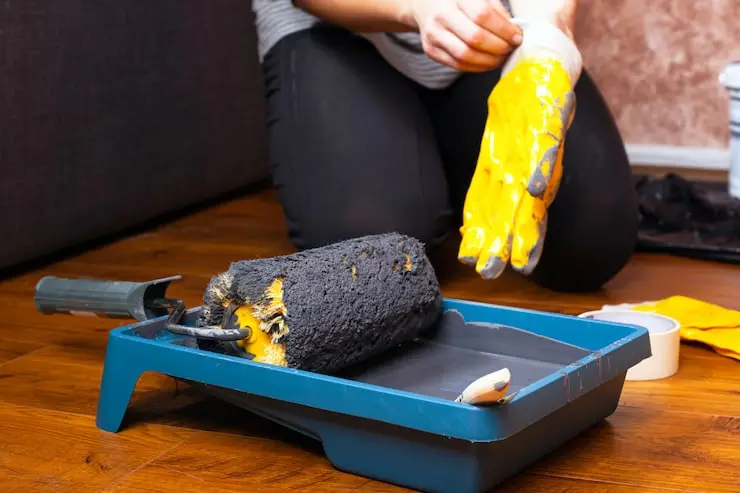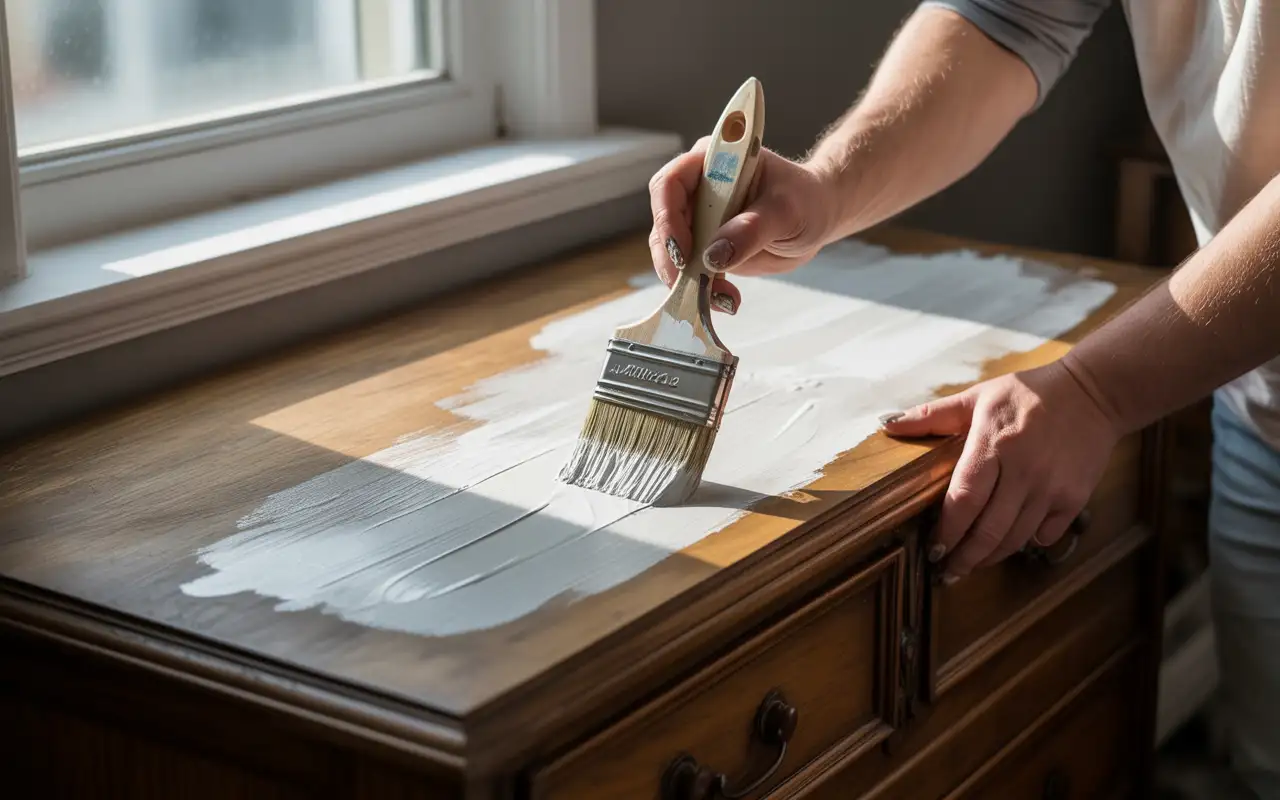A freestanding bathtub instantly upgrades any washroom. It shifts the entire space from a simple necessity to a luxury retreat. If you are planning a bathroom design or remodel, a stand alone tub offers style, a comfortable soaking experience, and a strong focal point.
In 2025, the best freestanding bathtub ideas blend cutting-edge materials with classic shapes, offering options for every taste and size of bathroom with freestanding tub. The average cost for a high-quality freestanding tub installation, including the tub itself, plumbing, and labor, is between $3,600 and $5,100. This makes it a great investment for a master bathroom with a stand alone tub.
Table of Contents
1. Deep Soaking Tub
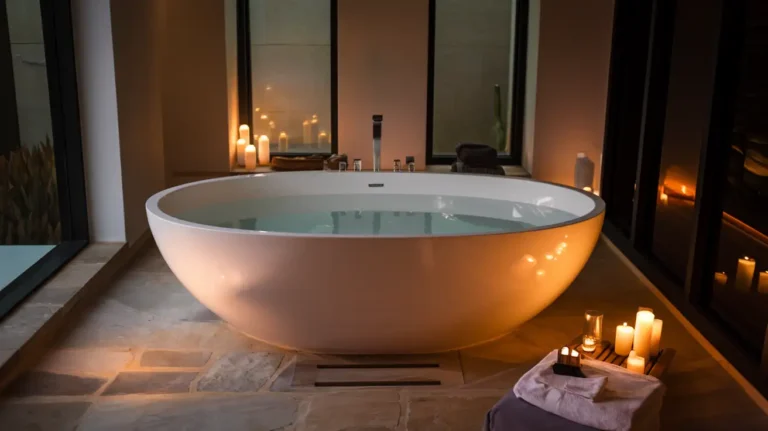
Deep soaking tubs let you sink in up to your shoulders. These tubs measure 24-30 inches deep, compared to standard 14-16 inch depths.
What Makes It Work: The beauty of a deep soaker is its compact footprint. You get more depth without needing extra floor space. Most measure 60 inches long and 32 inches wide, perfect for bathrooms with stand alone tubs where square footage matters.
Real Costs:
- Acrylic models: $800-$1,500
- Cast iron versions: $1,200-$3,000
- Stone resin luxury options: $2,000-$5,000
Installation runs $500-$1,200 for plumbing and setup. Factor in a wall mount faucet ($200-$600) or floor-mounted tap ($300-$800).
Design Tips: Place your deep soaker near a window for natural light. The tub feel improves when you can watch the sunset while you soak. Paint the surrounding walls in a neutral color palette soft grays, warm whites, or gentle beiges work best.
Check your floor joists before buying. Deep tubs hold 60-80 gallons when filled. That’s 500-650 pounds of water, plus your weight. Most homes need reinforced flooring.
2. Vintage Clawfoot Tub
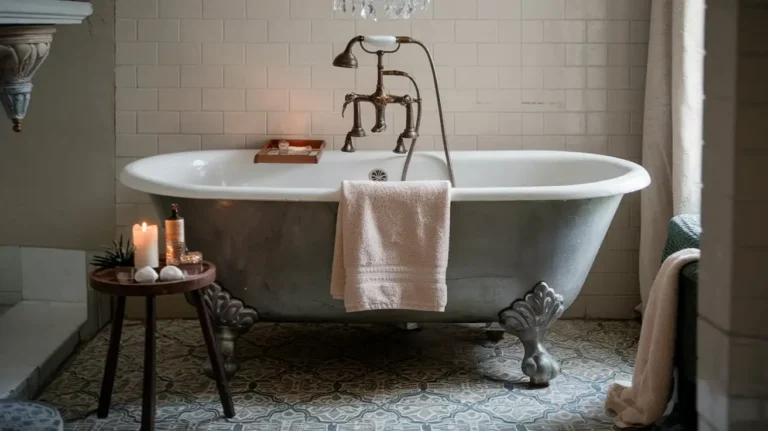
Clawfoot tubs bring old-world charm with their curved bodies and decorative feet. These bathroom bathtub ideas work in homes from Victorian to farmhouse styles.
Material Options:
- Original cast iron: $1,500-$4,000 (heaviest at 300-500 lbs)
- Modern acrylic reproductions: $600-$1,800 (lighter at 100-150 lbs)
- Copper alternatives: $2,500-$6,000 (ages beautifully)
Making It Modern: Paint the exterior in matte charcoal, navy blue, or forest green. Keep the interior white porcelain for contrast. Add brass fixtures or chrome fixtures based on your style; brass feels vintage, chrome reads contemporary.
Shower Solution: Install a ceiling-mounted shower curtain ring with waterproof fabric. This creates a combination tub and shower without permanent walls. Cost: $150-$400 for the full setup.
Best For: Bathrooms with freestanding baths where you want personality. The claw feet become a conversation piece. Works in both large master bathrooms with stand alone tub layouts and cozy cottage baths.
3. Midcentury Modern Tub
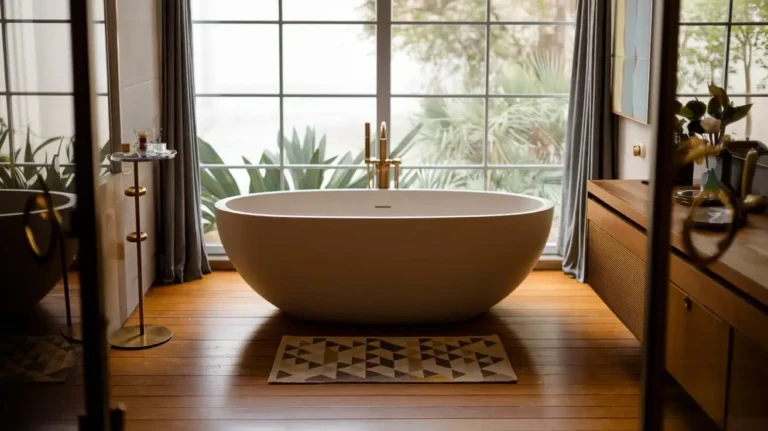
Clean lines and oval shapes define midcentury style. These new bathtub ideas skip the fancy details for pure geometry.
Key Features:
- Smooth oval or rectangular shapes
- No decorative elements
- Thin walls (1-2 inches thick)
- Low-profile design
The Look: Pair your modern bathtub ideas with geometric floor tiles, hexagons, penny rounds, or large format squares. Add gold fixtures for warmth or matte black for drama. Wall-mounted faucets keep the lines clean.
Color Palette: Stick to two or three colors maximum. White tub with terrazzo floors and walnut cabinets hits the mark. Or try a concrete tub against white subway tiles with brass accents.
Budget Reality: Quality midcentury-style tubs: $1,000-$2,500 Designer pieces: $3,000-$8,000 Installation: $600-$1,500
Plan for a total project cost of $2,500-$5,000 including plumbing, faucets, and labor.
4. Combination Tub and Shower
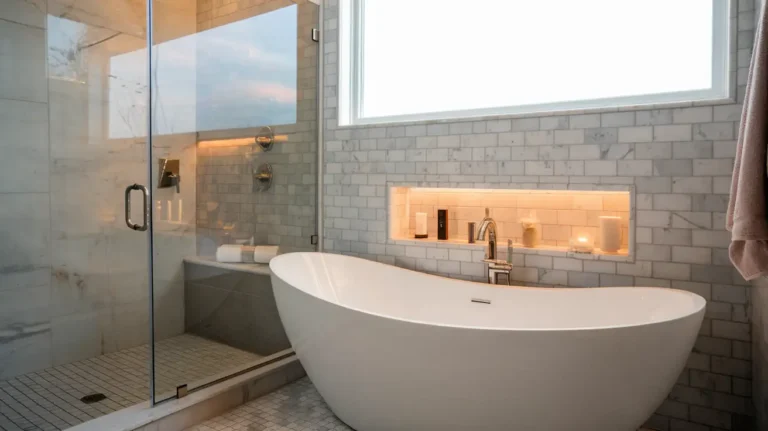
Small bathroom ideas with tubs often need dual function. You can have both without sacrificing style.
Setup Options:
- Standard Approach: Add a shower riser to your freestanding tub. This includes a handheld sprayer and overhead rain shower. Total cost: $400-$1,200 installed.
- Wet Room Style: Place your soaking tub inside a fully tiled, barrier-free shower zone. The entire space drains through floor channels. This bathroom with a freestanding tub layout feels like a spa.
- Waterproofing Matters: Wet rooms need proper slope (1/4 inch per foot) and waterproof membranes under all tiles. Budget $3,000-$8,000 for professional wet room installation. DIY isn’t recommended. Water damage repairs cost more than doing it right the first time.
- Space Requirements: Minimum 8×8 feet for comfortable dual use. Smaller works but feels cramped when showering.
5. Sunken Freestanding Tubs
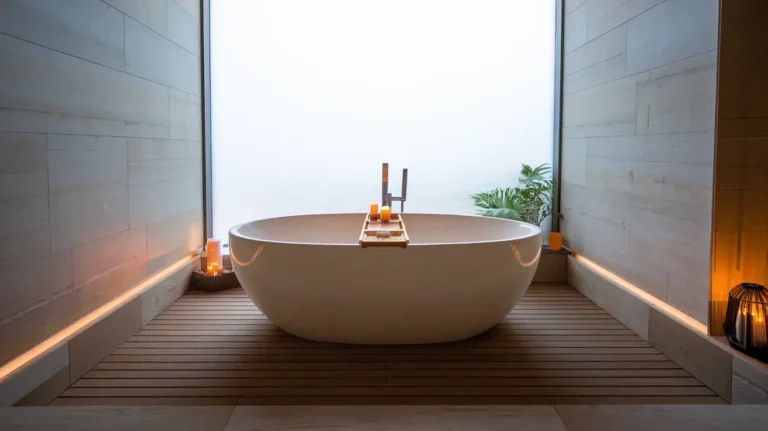
Drop your tub down 6-12 inches below floor level. This creates dimension and makes standard-depth tubs feel deeper.
Construction Process:
- Cut floor joists and reinforce with steel beams
- Build a waterproof pit with proper drainage
- Install tub with access panel for plumbing repairs
- Add step or ramp for safe entry
Cost Breakdown:
- Structural work: $2,000-$5,000
- Tub: $1,200-$4,000
- Plumbing: $800-$1,800
- Waterproofing: $500-$1,200
- Total: $4,500-$12,000
Why It Works: Sunken tubs create a focal point without taking up visual space. Your eye travels down, making the bathroom feel larger. Perfect for bathroom ideas with freestanding tubs in smaller spaces.
Safety Note: Add LED strip lighting around the step down. Falls are the biggest risk with sunken designs.
6. Small-Space Tub
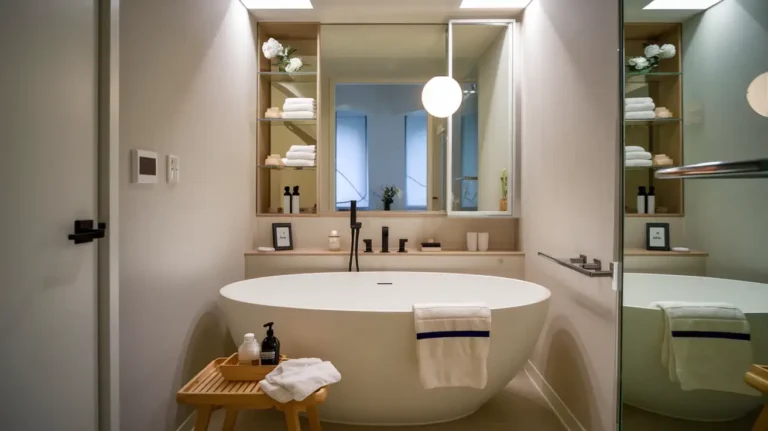
Bathroom small bathtub designs prove you don’t need 100 square feet for a good soak.
Compact Dimensions:
- 48-54 inches long (standard is 60)
- 27-30 inches wide
- 22-26 inches deep
Japanese soaking tubs excel here. They’re shorter but deeper, letting you sit upright with water to your chest.
Placement Strategy: Tuck your small freestanding tub with shower setup in a corner. This leaves floor space open for walking. Or place it under a window where the view compensates for size.
Budget-Friendly Options: Small acrylic tubs start at $400-$800. Add $300-$600 for installation. Total project: $1,000-$2,000.
Visual Tricks:
- Use large format tiles (12×24 or bigger) to make the room feel spacious
- Keep your color palette light and bright
- Install a frameless glass shower screen instead of curtains
- Add a floating vanity to show more floor
You can learn more about how to fit a freestanding tub in a Small Bathroom on our blog.
7. Copper and Brass Tubs

Metal tubs age gracefully. Copper develops a natural patina that shifts from bright penny to deep bronze over time.
Material Benefits:
- Naturally antimicrobial
- Holds heat 30% longer than acrylic
- Each tub is unique
- Lasts 50+ years with minimal care
Pricing:
- Hammered copper tubs: $2,500-$8,000
- Smooth copper: $3,000-$10,000
- Brass-finished steel: $1,800-$5,000
Maintenance Reality: Copper needs special cleaners. Regular soap causes green spots. Use pH-neutral products only. Many owners love the changing patina and skip polishing entirely.
Design Pairing: These bathtub ideas shine against neutral backgrounds. White walls, concrete floors, or natural wood let the metal be the star. Add copper to plants. Copper looks stunning with greenery.
8. Deep Soaking Japanese-Style Baths
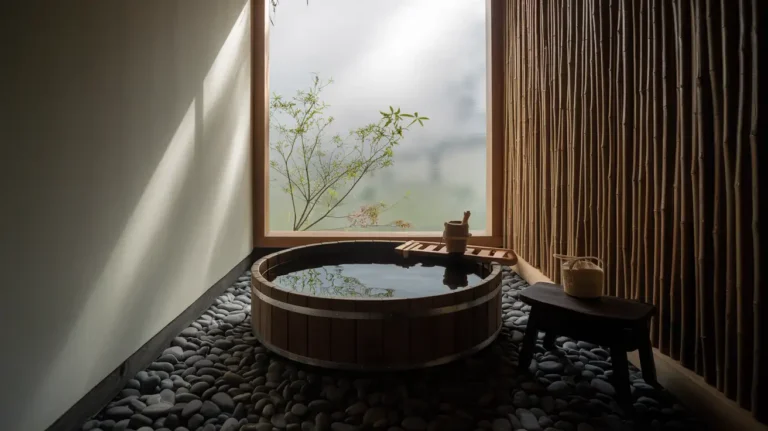
Ofuro tubs are short (48 inches) and deep (32 inches). You sit upright with knees bent, water covering your shoulders.
The Concept: Japanese design focuses on the meditative aspect of bathing. You rinse outside the tub, then soak in clean water for 15-20 minutes.
Material Choices:
- Hinoki cypress wood: $3,000-$12,000 (aromatic and traditional)
- Ceramic: $1,500-$4,000 (easiest to clean)
- Stone: $2,500-$8,000 (heat-retaining)
Water Temperature: Ofuro baths run hotter than Western tubs 104-108°F versus 100-102°F. Your water heater needs capacity for this. A 60-gallon heater handles most installations.
Space Saving: These freestanding tub ideas work in bathrooms with freestanding baths where length is limited. The 48-inch footprint fits where standard 60-inch tubs don’t.
9. Minimalist Oval Tubs

Smooth ovals with thin walls define minimalist bathroom design. No texture, no pattern, no decoration, just pure form.
What Defines Minimalist:
- Wall thickness under 1 inch
- No lip or rim detail
- Seamless drain integration
- Matte or glossy finish only
Best Materials:
- Solid surface (Corian-style): $2,000-$5,000
- Stone resin: $1,500-$4,000
- Acrylic with thin walls: $1,000-$2,500
The Total Look: Minimalist bathrooms with freestanding baths need restraint everywhere. Choose one accent color. Install recessed lighting instead of fixtures. Use large tiles with minimal grout lines. Keep counters clear.
Floor-Mounted Faucets: These pair perfectly with minimalist tubs. The faucet rises from the floor beside the tub no wall attachment needed. Cost: $400-$1,500.
10. Wooden Freestanding Tubs
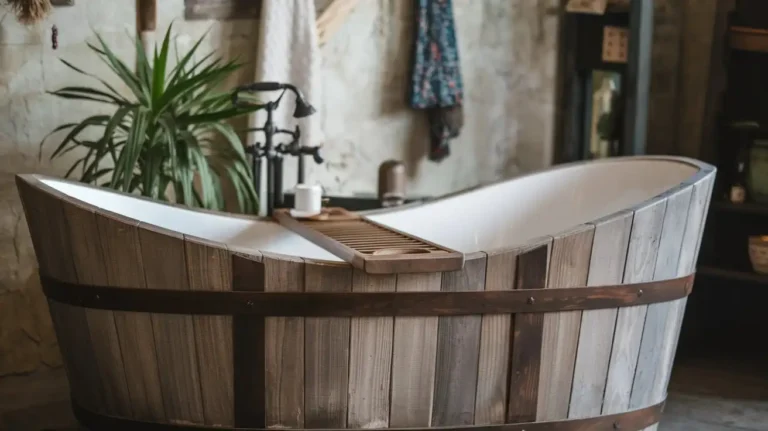
Wood tubs bring warmth and texture. Made from teak, cedar, or oak, they feel like furniture.
Construction: Quality wooden tubs use marine-grade epoxy and multiple coats of waterproof sealant. Expect 3-4 inch thick walls for proper waterproofing.
Longevity: Teak lasts 20-30 years with annual resealing. Cedar needs resealing every 2-3 years. Oak requires the most maintenance seal every 18 months.
Investment:
- Entry-level cedar: $2,500-$4,000
- Premium teak: $4,000-$12,000
- Custom designs: $8,000-$20,000
Climate Considerations: Wood expands and contracts with humidity. These bath tub designs work best in climate-controlled bathrooms. Avoid placing near heating vents or in direct sunlight.
Aesthetic Impact: Nothing matches wood for creating a spa-like retreat. The natural grain patterns make each tub one-of-a-kind. Pair with stone floors and plants for maximum effect.
Choosing Your Perfect Freestanding Bathtub
- Size First: Measure your bathroom three times. Allow 6 inches of clearance around the entire tub for cleaning and movement. Don’t forget ceiling height you need 12-18 inches above the tub rim for comfortable use.
- Plumbing Planning: Freestanding bathtub bathroom ideas require different plumbing than built-ins. Floor-mounted faucets need pipes run under the floor. Wall-mounted options need backing in the walls. Budget $800-$2,000 for plumbing changes.
- Weight Load: Check with a structural engineer before installing. Standard residential floors support 40 pounds per square foot. A filled cast iron tub exceeds this. Reinforcement costs $1,500-$4,000.
- Drain Considerations: Center drains look cleanest but cost more to plumb. End drains are easier to install. Make sure you can access the drain for future repairs built in a removable panel.
You may also want to read: Tub to shower conversion
Making It Last
Cleaning:
- Acrylic: Use non-abrasive cleaners only. Scratches show easily.
- Cast iron: Bar Keeper’s Friend removes stains without damaging porcelain.
- Stone resin: pH-neutral soap and water. Avoid acids.
- Copper: Special copper cleaners or accept the patina.
Annual Maintenance: Check caulk lines around floor-mounted faucets every spring. Water leaks cause major damage. Reseal as needed costs $50 in materials or $200-$400 for professional help.
Conclusion
Pictures of freestanding tubs inspire, but the right choice depends on your space, budget, and lifestyle. Deep soakers work for serious relaxation. Clawfoot tubs add character. Japanese-style baths save space while delivering a full soak.
Start with measurements. Know your budget. Consider how you actually use a tub: quick evening soaks need different features than weekend spa sessions.
Ready to transform your bathroom into a personal retreat? San Diego Home Remodeling specializes in custom bathroom installations. Our team handles everything from structural work to final fixtures. We offer professional bathroom remodeling services in San Diego that turn these ideas into reality. Book a free consultation to discuss your freestanding bathtub project.
FAQs about Freestanding Bathtubs
How much does it cost to install a freestanding bathtub?
Installation ranges from $500-$2,000 depending on plumbing complexity. Add the tub cost ($600-$12,000) plus fixtures ($200-$1,500). Total budget: $1,300-$15,500.
Do freestanding tubs need special plumbing?
Yes. Most need floor-mounted or wall-mounted faucets since the tub doesn’t attach to walls. Budget $800-$2,000 for new plumbing runs.
What’s the smallest space for a freestanding tub?
Japanese-style tubs fit in 5×7 foot bathrooms. Allow 48 inches for the tub plus 18 inches of clearance for movement. Total: 66 inches minimum.
Are freestanding tubs hard to clean?
You’ll clean all sides instead of just the inside. Takes 5-10 minutes extra per cleaning. The tradeoff is worth it for most homeowners.
Can I put a freestanding tub on any floor?
Check load capacity first. Filled tubs weigh 500-800 pounds. Most homes need reinforced joists for cast iron or stone tubs. Acrylic tubs work on standard floors.
What material is best for freestanding tubs?
Acrylic costs less and stays warm. Cast iron lasts longest but weighs most. Stone resin balances durability and weight. Choose based on budget and style goals.
Do I need a contractor for installation?
Yes, unless you’re experienced with plumbing and floor reinforcement. DIY mistakes cause water damage that costs more than professional installation. Hire licensed plumbers for peace of mind.

